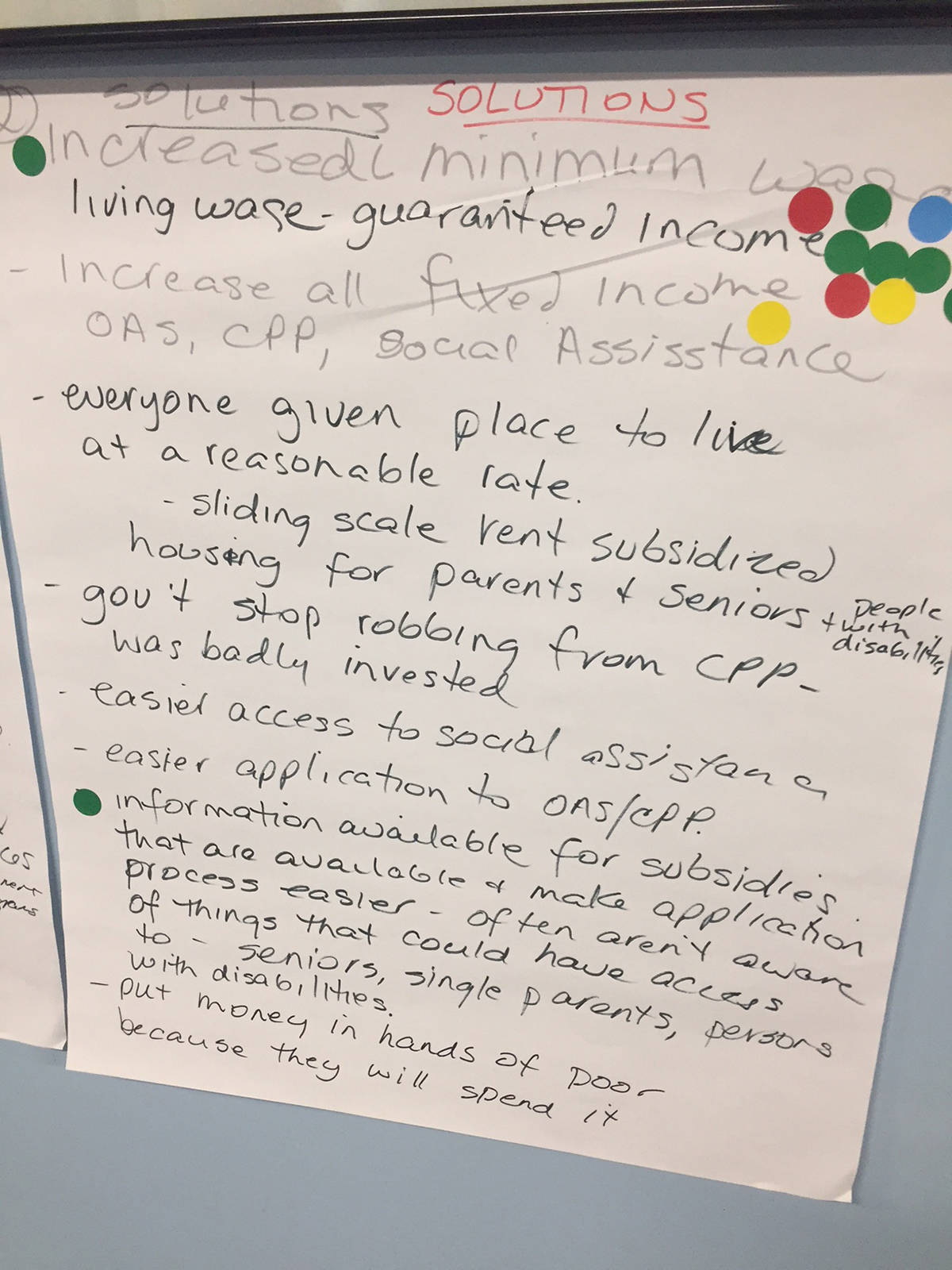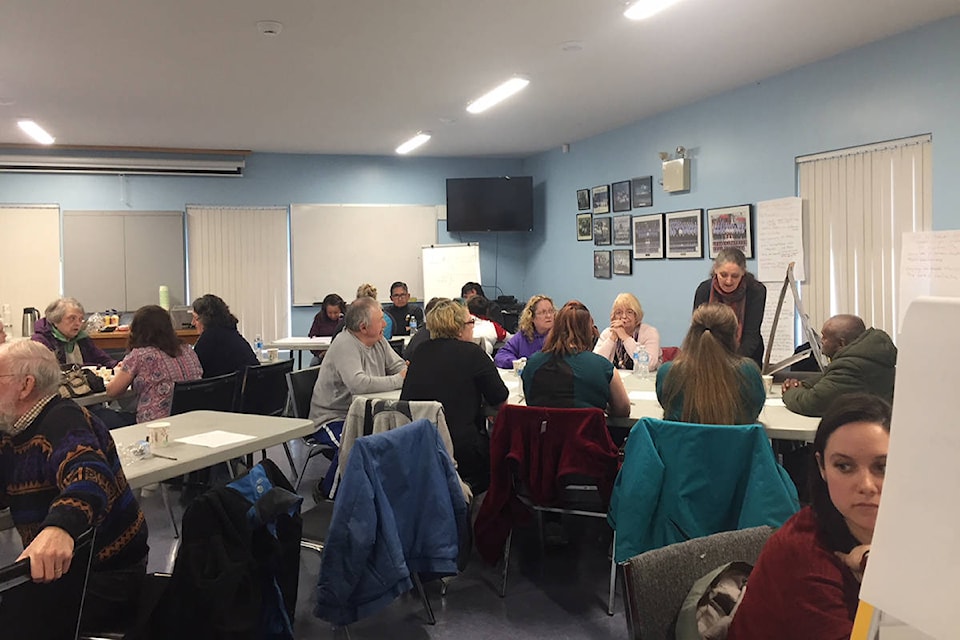One in every four people in Port Hardy live below the poverty line.
And the North Island — as definied by Regional District of Mount Waddington — has the third highest child poverty rate in the province.
Addictions, lack of resources, employment opportunities, and affordable housing were cited as some of the community issues that need to be addressed as the B.C. government’s fact-finding provincial poverty tour rolled through the region last week.
A March 27 Port Hardy meeting inviting residents to participate in building a province-wide proverty reduction plan was attended by roughly 40 people. It was facilitated by Don Kattler, Family Consultant with Ministry of Children and Family Development, and hosted with funding from the Mount Waddington Health Network.
Kattler explained that census data shows in Port Hardy alone there are 915 people living in poverty out of a population of over 4,000.
“How many people walked into this room tonight and knew we had 915 people living in poverty?” asked Kattler, adding, “People need to know this information.”
Kattler explained that the agenda for the consultation meetings were the same across the province and focused on two questions: 1. What are the issues facing you and people living in poverty right now? 2. What would address the issues and help you and people out of poverty?
Each table wrote down what they thought would help people out of poverty, and participants were invited to place stickers on which solutions they thought would be most impactful.
Some of the solutions identified included living wages, guaranteed income, affordable childcare, affordable and safe housing, and educational opportunities.
Kattler also noted all of the information from the consultation will be transcribed and reported back to the government.
“Even though this is a provincial consultation there are a lot of things we can do at a local level,” said Kattler, pointing to community gardens as one of the possible solutions to the issue of poverty.
As part of a provincial election promise, community consultation meetings have been held in communities and Friendship Centres across the province beginning October 2017.
More information is available online at engage.gov.bc.ca/bcpovertyreduction/submit-your-feedback.

